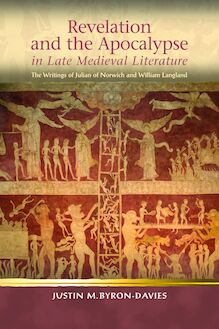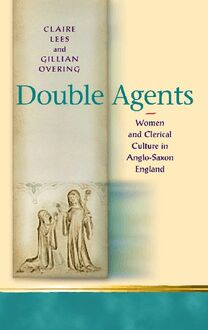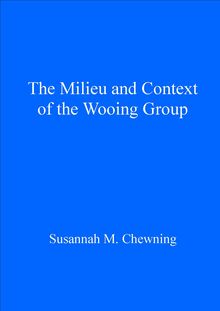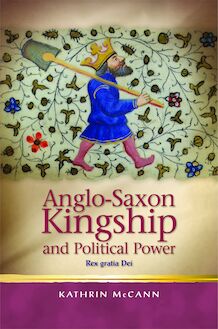-
 Univers
Univers
-
 Ebooks
Ebooks
-
 Livres audio
Livres audio
-
 Presse
Presse
-
 Podcasts
Podcasts
-
 BD
BD
-
 Documents
Documents
-
- Cours
- Révisions
- Ressources pédagogiques
- Sciences de l’éducation
- Manuels scolaires
- Langues
- Travaux de classe
- Annales de BEP
- Etudes supérieures
- Maternelle et primaire
- Fiches de lecture
- Orientation scolaire
- Méthodologie
- Corrigés de devoir
- Annales d’examens et concours
- Annales du bac
- Annales du brevet
- Rapports de stage
La lecture à portée de main
Vous pourrez modifier la taille du texte de cet ouvrage
Découvre YouScribe en t'inscrivant gratuitement
Je m'inscrisDécouvre YouScribe en t'inscrivant gratuitement
Je m'inscrisEn savoir plus
Vous pourrez modifier la taille du texte de cet ouvrage
En savoir plus

Description
These works are unique in their context – written almost certainly for a group of women living as anchoresses and recluses who were literate in English and were interested in guidance both in spiritual and worldly issues. The book discusses and explains the impact and significance of these works and situates them within the continuum of medieval theological and literary culture.
Sujets
Informations
| Publié par | University of Wales Press |
| Date de parution | 01 mars 2009 |
| Nombre de lectures | 0 |
| EAN13 | 9781783163632 |
| Langue | English |
Informations légales : prix de location à la page 0,1900€. Cette information est donnée uniquement à titre indicatif conformément à la législation en vigueur.
Extrait
RELIGION AND CULTURE IN THE MIDDLE AGES
The Milieu and Context of the Wooing Group
Series Editors
Denis Renevey (University of Lausanne)
Diane Watt (Aberystwyth University)
Editorial Board
Miri Rubin (Queen Mary, University of London)
Jean-Claude Schmitt ( cole des Hautes tudes en Sciences Sociales, Paris)
Fiona Somerset (Duke University)
Christiania White head (University of Warwick)
RELIGION AND CULTURE IN THE MIDDLE AGES
The Milieu and Context of the Wooing Group
Edited by
SUSANNAH MARY CHEWNING
The Contributors, 2009
All rights reserved. No part of this book may be reproduced in any material form (including photocopying or storing it in any medium by electronic means and whether or not transiently or incidentally to some other use of this publication) without the written permission of the copyright owner except in accordance with the provisions of the Copyright, Designs and Patents Act 1988 or under the terms of a licence issued by the Copyright Licensing Agency Ltd, Saffron House, 6-10 Kirby Street, London, EC1N 8TS. Applications for the copyright owner s written permission to reproduce any part of this publication should be addressed to The University of Wales Press, 10 Columbus Walk, Brigantine Place, Cardiff, CF10 4UP.
www.uwp.co.uk
British Library Cataloguing-in-Publication Data
A catalogue record for this book is available from the British Library.
ISBN: 978-0-7083-2322-9 eISBN: 978-1-78316-435-6
The rights of the Contributors to be identified as authors of this work have been asserted by them in accordance with sections 77, 78 and 79 of the Copyright, Designs and Patents Act 1988.
Cover illustration: From the Tacuinum sanitatis, known as the Theatrum sanitatis, c.1390-1400. Rome, Biblioteca Casanatense, MS 4182. By permission
C ONTENTS
Series Editors Preface
Acknowledgements
Notes on Contributors
1 Introduction
Susannah Mary Chewning
2 The Conditions of Eligibility in e Wohunge of ure Lauerd
Bella Millett
3 Speaking of Flesh and Soul: Linguistic and Spiritual Translation in the Wooing Group
Susannah Mary Chewning
4 Subject, Object and Mantra in e Wohunge of ure Lauerd
Jennifer N. Brown
5 The spellings e , ea and a in two Wooing Group texts (MSS London, Cotton Nero A.xiv and London, Lambeth Palace 487)
Jeremy Smith
6 e Wohunge of ure Lauerd and the Tradition of Affective Devotion: Rethinking Text and Audience
Catherine Innes-Parker
7 e blod [at] bohte : The Wooing Group Christ as Pierced, Pricked and Penetrated Body
Michelle M. Sauer
8 Transvestism in the Anchorhold
Sarah Salih
9 The Wooing Group: Pain, Pleasure and the Anchoritic Body
Anne Savage
10 What Kind of Writing is A Talkyng of e Love of God ?
Michael G. Sargent
11 Afterword: On Eise
Nicholas Watson
Bibliography
S ERIES E DITORS P REFACE
Religion and Culture in the Middle Ages aims to explore the interface between medieval religion and culture, with as broad an understanding of those terms as possible. It puts to the forefront studies which engage with works that significantly contributed to the shaping of medieval culture. However, it also gives attention to studies dealing with works that reflect and highlight aspects of medieval culture that have been neglected in the past by scholars of the medieval disciplines. For example, devotional works and the practice they infer illuminate our understanding of the medieval subject and its culture in remarkable ways, while studies of the material space designed and inhabited by medieval subjects yield new evidence on the period and the people who shaped it and lived in it. In the larger field of religion and culture, we also want to explore further the roles played by women as authors, readers and owners of books, thereby defining them more precisely as actors in the cultural field. The series as a whole investigates the European Middle Ages, from c .500 to c .1500. Our aim is to explore medieval religion and culture with the tools belonging to such disciplines as, among others, art history, philosophy, theology, history, musicology, the history of medicine, and literature. In particular, we would like to promote interdisciplinary studies, as we believe strongly that our modern understanding of the term applies fascinatingly well to a cultural period marked by a less tight confinement and categorization of its disciplines than the modern period. However, our only criterion is academic excellence, with the belief that the use of a large diversity of critical tools and theoretical approaches enables a deeper understanding of medieval culture. We want the series to reflect this diversity, as we believe that, as a collection of outstanding contributions, it offers a more subtle representation of a period that is marked by paradoxes and contradictions and which necessarily reflects diversity and difference, however difficult it may some-times have proved for medieval culture to accept these notions.
A CKNOWLEDGEMENTS
The Wooing Group and the texts most closely associated with it, Ancrene Wisse and the Katherine Group, comprise a community of works of early Middle English that have often been viewed outside of their cultural and linguistic context or as anomalous and beyond any real tradition of literature, culture, or even theology in the English Middle Ages. This collection will, I believe, serve to open these works to new readers, new perspectives and interpretations, and new constructions of medieval English theology, the anchoritic tradition, and early Middle English literature. The scholars who have contributed to this collection, many of them recognized experts in their respective disciplines, have brought to light creative and innovative perspectives on these works and their milieu, and for that I would like to begin by giving my thanks to each of them for their careful, thoughtful, and exceptional interpretations and examinations of these works: Jennifer Brown, Sarah Salih, Catherine Innes-Parker, Michelle Sauer, Jeremy Smith, Michael Sargent, Bella Millett, and most especially Anne Savage and Nicholas Watson, whose Anchoritic Spirituality (Paulist Press 1991) is the starting point for all scholars who pursue the English Anchoritic tradition. Their presence in this collection is especially important to me, as their scholarship, generosity, and support has made any work I have completed on e Wohunge of ure Lauerd possible, and I owe them and all of the contributors my most sincere thanks.
This collection was first suggested as a result of a conversation begun at the first Anchoritic Conference, Anchorites, Wombs, and Tombs at Gregynog, Wales, in 2002. The conference, organized by Mari Hughes-Edwards and Liz Herbert McAvoy, predates the formation of the International Anchoritic Society (although it, too, is an outgrowth of the conference) and allowed scholars interested in the anchoritic tradition in England to discuss their ideas and scholarship in a context of others who already knew what the words anchoritic and indeed Wohunge meant, so that we were able to discuss our work at much greater length and begin to form a network of collaboration and collegiality. I am quite sure many of those of us who attended that conference and the three successive anchoritic conferences-at Gregynog, Glenstal Abbey in Ireland, and Hiroshima Shudo University in Japan-have been as grateful as I have to be involved in such a community of scholars, but it ought to be said in writing, so I would very much like to thank the organizers of those events, Mari Hughes-Edwards, Colm n O Clabaigh, Fumiko Yoshikawa, and Liz Herbert McAvoy for their hard work and gracious hospitality during and beyond these events.
Liz McAvoy deserves a special thanks from all of those who study the anchoritic tradition, but most especially from me, both personally and professionally. She has tirelessly organized events, including the anchoritic conferences, such as organizing the International Anchoritic Society sessions at the Leeds International Medieval Congress, organizing events for the IAS as well as for the Society for Medieval Feminist Scholarship at both the Leeds and Kalamazoo Congresses; she also is a prolific and gifted scholar whose own work has contributed a great deal to anchoritic studies and the study of the figures who participated in the English anchoritic tradition-most notably Christine Carpenter, Julian of Norwich, and Margery Kempe. She is a great friend and has helped me in my work in countless ways, including this project, and I would like to thank her sincerely for her loyalty and support.
Diane Watt and Denis Renevey, the editors of the Religion and Culture in the Middle Ages series for the University of Wales Press, have also been extremely supportive and helpful with this project (and my career) from its earliest stages and as I have brought it to its completion, all the while juggling a full-time teaching load, recovering from two serious injuries and dealing with a distance of several thousand miles. I would also like to thank my colleagues in the Department of English at Union County College for their patience and support as my deadlines loomed and other matters sometimes had to be put off temporarily.
Finally, I am indebted to the members and participants, again, of the International Anchoritic Society, those who contributed essays to this volume and those whose work has informed and supported the works of the contributors, including Robert Hasenfratz, Michelle Sauer, Jennifer Brown, Nao Kukita Yoshikawa, Eddie Jones, Liz McAvoy, Robin Gillbank, Catherine Innes-Parker, Jane Chance, Diane Watt, Anne Savage, Vincent Gillespie, Denis Renevey, Cate Gunn, Louise Nelstrop, Johan Bergstrom-Allen, and Karl-Heinz Steinmetz, to whom, collectively, this volume is dedicated.
N OTES ON C ONTRIBUTORS
J ENNIFER N. B ROWN is assistant professor of medieval and early modern literature at Marymount Manhattan College. Her book, Three Women of Li ge
-
 Univers
Univers
-
 Ebooks
Ebooks
-
 Livres audio
Livres audio
-
 Presse
Presse
-
 Podcasts
Podcasts
-
 BD
BD
-
 Documents
Documents
-
Jeunesse
-
Littérature
-
Ressources professionnelles
-
Santé et bien-être
-
Savoirs
-
Education
-
Loisirs et hobbies
-
Art, musique et cinéma
-
Actualité et débat de société
-
Jeunesse
-
Littérature
-
Ressources professionnelles
-
Santé et bien-être
-
Savoirs
-
Education
-
Loisirs et hobbies
-
Art, musique et cinéma
-
Actualité et débat de société
-
Actualités
-
Lifestyle
-
Presse jeunesse
-
Presse professionnelle
-
Pratique
-
Presse sportive
-
Presse internationale
-
Culture & Médias
-
Action et Aventures
-
Science-fiction et Fantasy
-
Société
-
Jeunesse
-
Littérature
-
Ressources professionnelles
-
Santé et bien-être
-
Savoirs
-
Education
-
Loisirs et hobbies
-
Art, musique et cinéma
-
Actualité et débat de société
- Cours
- Révisions
- Ressources pédagogiques
- Sciences de l’éducation
- Manuels scolaires
- Langues
- Travaux de classe
- Annales de BEP
- Etudes supérieures
- Maternelle et primaire
- Fiches de lecture
- Orientation scolaire
- Méthodologie
- Corrigés de devoir
- Annales d’examens et concours
- Annales du bac
- Annales du brevet
- Rapports de stage




















